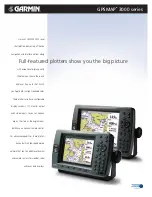
SF-2050 User Guide - Rev. E
both the reference receivers and the user receivers. It is
the use of
dual-frequency
receivers at both the
reference stations
and the user equipment together
with the advanced processing algorithms, which makes
the exceptional accuracy of the
StarFire
™
system
possible.
Creating the corrections is just the first part. From our
two Processing Centers, the differential corrections are
then sent to the Land Earth Station (
LES
) for uplink to
L-
Band
communications satellites. The uplink sites for the
network are equipped with NavCom-built modulation
equipment, which interfaces to the satellite system
transmitter and uplinks the correction data stream to
the satellite that broadcasts it over the coverage area.
Each
L-Band
satellite covers more than a third of the
earth.
Users equipped with a
StarFire
™
precision
GPS
receiver
actually have two receivers in a single package, a
GPS
receiver and an
L-Band
communications receiver, both
designed by NavCom for this system. The
GPS
receiver
tracks all the satellites in view and makes
pseudorange
measurements to the
GPS
satellites. Simultaneously, the
L-Band
receiver receives the correction messages
broadcast via the
L-Band
satellite. When the corrections
are applied to the
GPS
measurements, a
position
measurement of unprecedented real time accuracy is
produced.
Reliability
The entire system meets or exceeds a target availability
of 99.99%. To achieve this, every part of the
infrastructure has a built-in back-up system.
All the
reference stations
are built with duplicate
receivers, processors and communication interfaces,
C-46
Summary of Contents for GPS Products
Page 2: ......
Page 12: ......
Page 20: ...SF 2050 User Guide Rev E Figure 2 SF 2050 Front View Figure 3 SF 2050M Only Back View 2 18...
Page 41: ......
Page 43: ...SF 2050 User Guide Rev E Satellite Based Augmentation System Signals WAAS EGNOS StarFire A 41...
Page 51: ...SF 2050 User Guide Figure C1 StarFire Network C 49...
Page 55: ......
















































